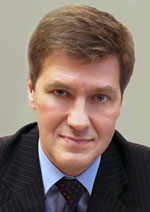Menu
Publications
2025
2024
2023
2022
2021
2020
2019
2018
2017
2016
2015
2014
2013
2012
2011
2010
2009
2008
2007
2006
2005
2004
2003
2002
2001
Editor-in-Chief

Nikiforov
Vladimir O.
D.Sc., Prof.
Partners
doi: 10.17586/2226-1494-2023-23-5-935-945
The use of anthropometric points to introduce restrictions into the synthesis of a 3D model of the human body using SMPL
Read the full article
Article in Russian
For citation:
Abstract
For citation:
Kugaevskikh A.V., Bolshim M.A., Sattarov I.F. The use of anthropometric points to introduce restrictions into the synthesis of a 3D model of the human body using SMPL. Scientific and Technical Journal of Information Technologies, Mechanics and Optics, 2023, vol. 23, no. 5, pp. 935–945 (in Russian). doi: 10.17586/2226-1494-2023-23-5-935-945
Abstract
Generating a realistic three-dimensional model of the human body is a very time-consuming task. Even with the necessary computing resources, generation errors occur on the figures of people who differ from the average physique. In this paper, an experimental algorithm for reading anthropometric data from only two full-face and profile photographs is proposed. The proposed solution to the problem of generation using the selection of anthropometric points involves setting the constraints of the SMPL (Skinned Multi-Person Linear Model) model. For segmentation of the human body based on empirical studies, a modification of the Fully Connected Convolutional Neural Network (FCN) ResNet101, trained on the COCO Segmentation 2017 dataset, was used. With its help, the basis for the detection of anthropometric points in full-face and profile photos was obtained. The error in determining anthropometric points ranges from 2 to 5 % depending on their location. The constraints for the SMPL rendering model are calculated using the Levenberg- Marquardt algorithm. For its correct operation, a special cost function is proposed, taking into account the features of this task. The dataset collected by the authors of the article (117 people of different physiques and height) shows that the proposed method allows you to obtain a small average absolute error (MAE = 0.0395 m) and a high coefficient of determination (R2 = 0.913). The graph of anthropometric points sets stricter conditions for generating a figure and any deviation from the graph is a consequence of a large generation error. The proposed solution allows you to accurately generate a model of the human body. At the same time, low requirements for computing resources and the quality of users’ initial photos remain. The proposed solution can be used in online fitting rooms, which adds additional complexity to the task due to the requirements to restore the figure from only two pictures as well as the need to accurately reproduce the features of male and female figures.
Keywords: generation of human body model, SMPL, anthropometric points, keypoint recognition, 3d mesh model
References
References
- Robinette K.M., Daanen H., Paquet E. The CAESAR project: a 3-D surface anthropometry survey. Proc. of the Second International Conference on 3-D Digital Imaging and Modeling (Cat. No. PR00062), 1999, pp. 380–386. https://doi.org/10.1109/im.1999.805368
- Hirshberg D.A., Loper M., Rachlin E., Black M.J. Coregistration: Simultaneous alignment and modeling of articulated 3D shape. Lecture Notes in Computer Science, 2012, vol. 7577, pp. 242–255. https://doi.org/10.1007/978-3-642-33783-3_18
- Loper M., Mahmood N., Romero J., Pons-Moll G., Black M.J. SMPL: A skinned multi-person linear model. ACM Transactions on Graphics, 2015, vol. 34, no. 6, pp. 1–16. https://doi.org/10.1145/2816795.2818013
- Pearson K. LIII. On lines and planes of closest fit to systems of points in space. The London, Edinburgh, and Dublin Philosophical Magazine and Journal of Science, 1901, vol. 2, no. 11, pp. 559–572. https://doi.org/10.1080/14786440109462720
- Kanazawa A., Black M.J., Jacobs D.W., Malik J. End-to-end recovery of human shape and pose. Proc. of the 2018 IEEE/CVF Conference on Computer Vision and Pattern Recognition, 2018, pp. 7122–7131. https://doi.org/10.1109/cvpr.2018.00744
- Lin T.Y., Maire M., Belongie S., Hays J., Perona P., Ramanan D., Dollár P., Zitnick C.L. Microsoft COCO: Common objects in context. Lecture Notes in Computer Science, 2014, vol. 8693, pp. 740–755. https://doi.org/10.1007/978-3-319-10602-1_48
- He K., Zhang X., Ren S., Sun J. Identity mappings in deep residual networks. Lecture Notes in Computer Science, 2016, vol. 9908, pp. 630–645. https://doi.org/10.1007/978-3-319-46493-0_38
- Ionescu C., Papava D., Olaru V., SminchisescuC. Human3.6M: Large scale datasets and predictive methods for 3D human sensing in natural environments. IEEE Transactions on Pattern Analysis and Machine Intelligence, 2014, vol. 36, no. 7, pp. 1325–1339. https://doi.org/10.1109/tpami.2013.248
- Johnson S., Everingham M. Clustered pose and nonlinear appearance models for human pose estimation. Proc.of the British Machine Vision Conference, 2010, pp. 12.1–12.11. https://doi.org/10.5244/c.24.12
- Loper M., Mahmood N., Black M.J. MoSh: Motion and shape capture from sparse markers. ACM Transactions on Graphics, 2014,vol. 33, no. 6,pp. 1–13. https://doi.org/10.1145/2661229.2661273
- Andriluka M., Pishchulin L., Gehler P., Schiele B.2D human pose estimation: New benchmark and state of the art analysis. Proc. of the IEEE Conference on Computer Vision and Pattern Recognition, 2014, pp. 3686–3693. https://doi.org/10.1109/cvpr.2014.471
- Mehta D., Sridhar S., Sotnychenko O., Rhodin H., Shafiei M., Seidel H.-P., Xu W., Casas D., TheobaltC. VNect: Real-time 3D human pose estimation with a single rgb camera. ACM Transactions on Graphics, 2017, vol. 36,no. 4, pp. 1–14. https://doi.org/10.1145/3072959.3073596
- Varol G., Ceylan D., Russell B., Yang J., Yumer E., Laptev I., Schmid C. BodyNet: Volumetric inference of 3D human body shapes. Lecture Notes in Computer Science, 2018, vol. 11211, pp. 20–38. https://doi.org/10.1007/978-3-030-01234-2_2
- Chang A.X., Funkhouser T., Guibas L., Hanrahan P., Huang Q., Li Z., Savarese S., Savva M., Song S., Su H., Xiao J., Yi L., Yu F. ShapeNet: An information-rich 3D model repository. arXiv, 2015, arXiv:1512.03012. https://doi.org/10.48550/arXiv.1512.03012
- Varol G., Romero J., Martin X., Mahmood N., Black M.J., Laptev I., Schmid C. Learning from synthetic humans. Proc. of the IIEEE Conference on Computer Vision and Pattern Recognition (CVPR), 2017, pp. 109–117. https://doi.org/10.1109/cvpr.2017.492
- Lassner C., Romero J., Kiefel M., Bogo F., Black M.J., Gehler P.V. Unite the people: Closing the loop between 3Dand 2Dhuman representations. Proc.of the IEEE Conference on Computer Vision and Pattern Recognition (CVPR), 2017, pp. 6050–6059. https://doi.org/10.1109/cvpr.2017.500
- Bogo F., Kanazawa A., Lassner C., Gehler P., Romero J., Black M.J. Keep it SMPL: Automatic estimation of 3D human pose and shape from a single image. Lecture Notes in Computer Science, 2016,vol. 9909,pp. 561–578. https://doi.org/10.1007/978-3-319-46454-1_34
- Pishchulin L., Insafutdinov E., Tang S., Andres B., Andriluka M., Gehler P., Schiele B. DeepCut: Joint subset partition and labeling for multi person pose estimation. Proc. of the IEEE Conference on Computer Vision and Pattern Recognition (CVPR), 2016, pp. 4929–4937. https://doi.org/10.1109/cvpr.2016.533
- Thiery J.M., Guy É., Boubekeur T. Sphere-meshes: Shape approximation using spherical quadric error metrics. ACM Transactions on Graphics, 2013, vol. 32,no. 6, pp. 1–12. https://doi.org/10.1145/2508363.2508384
- Long J., Shelhamer E., Darrell T. Fully convolutional networks for semantic segmentation. Proc. of the IEEE Conference on Computer Vision and Pattern Recognition (CVPR), 2015, pp. 3431–3440. https://doi.org/10.1109/cvpr.2015.7298965
- Ren S., He K., Girshick R., Sun J. Faster R-CNN: Towards real-time object detection with region proposal networks. Advances in Neural Information Processing Systems, 2015, vol. 28, pp. 91–99.
- Ujević D., Rogale D., Drenovac M., Pezelj D., Hrastinski M., Narančić N.S., Mimica Ž., Hrženjak R. Croatian anthropometric system meeting the European Union. International Journal of Clothing Science and Technology,2006, vol. 18, no. 3, pp. 200–208. https://doi.org/10.1108/09556220610657961
- Prasanth G.N.S. Golden Ratio in Human Anatomy. Master’s thesis. Chittur,Government College Chittur, 2012.













